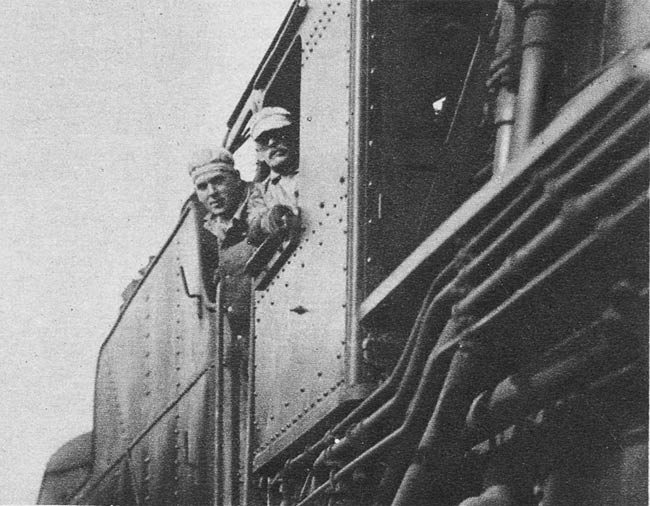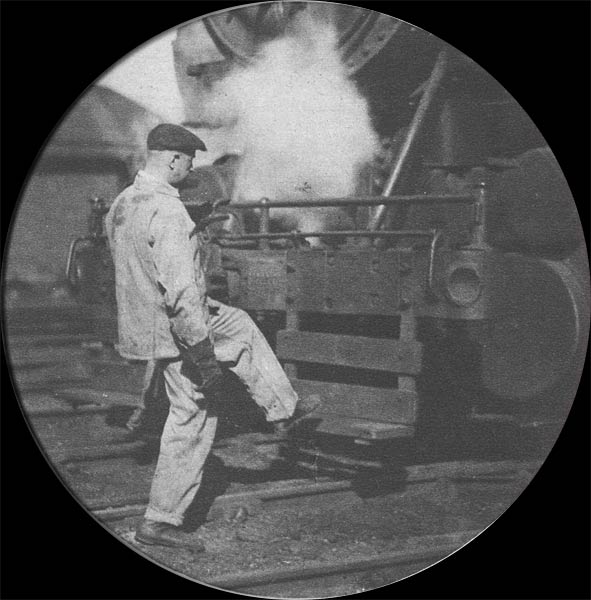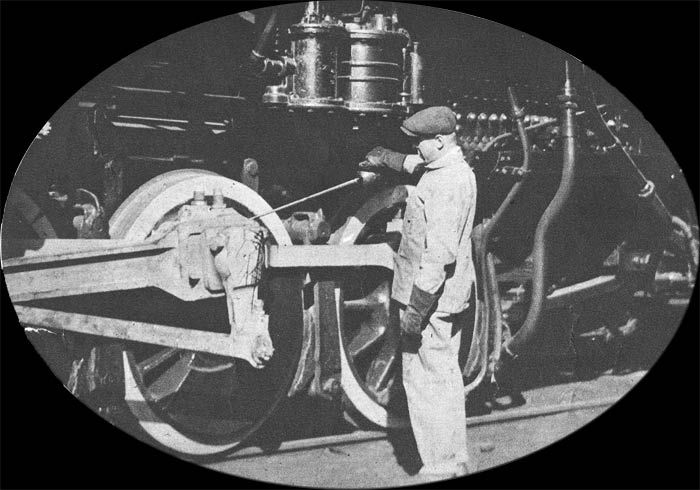"A Glimpse at Buffalo's Railroad Yards"
A photo page appeared regularly in the Buffalo Courier. Often, these were the work of W. H. Porterfield, whose long career as a photo artist and employee of the Courier (and later Courier-Express) has left us with a large record of life (and scenes) in Western New York. These photos are from the November 18, 1923 edition. Captions under each photo are original.
"There are fifteen railroad lines entering Buffalo, the third largest railroad center in the United States. Three hundred passenger and five hundred freight trains arrive and depart from Buffalo daily."
A maze of tracks. This shows the intricate system of tracks and switches in Buffalo.
According to Joe Kocsis, president of the WNY Railway Historical Society, the photographer is likely standing on the Bailey Avenue bridge. The engine facility is the Bailey Avenue New York Central roundhouse. The many tracks leading off are for the East Buffalo NYC car shop and stockyards.

The man in the switch tower.
Ronald Dukarm, D L & W railroad scholar: "This is a towerman in a switch tower operating levers to throw switches out in the yard. Certain switches and signals were 'interlocked' in order to avoid sending two trains onto the same track."

Always on the job. Railroad tracks need constant attention.

At the car works. Here are some of the men who make new cars and repair old ones.
Ronald Dukarm adds, "Carmen are repairing a Delaware, Lackawanna & Western coal hopper. Until the car repair shop was built in the mid-1920s, car repair work was done outside in the weather. This is the D L & W yard in Sloan, NY, which also had a roundhouse, and extensive shops, a stockyard, a YMCA, and large yards stretching for miles around for storing and sorting cars."
Sloan was named after Samuel Sloan, D L & W president from 1867-1899. The car yards were located at the foot of Halstead Street, between Walden and Broadway.

Toot Toot! All aboard for New York City
Ronald Dukarm: "The engineer and fireman lean out the engineer's window of this Lackawanna locomotive to pose for the photographer."

Boarding a locomotive. This method is in common use by railroad men.
Ronald Dukarm: "The brakeman is about to mount the front steps of the locomotive and ride to the next car to couple up. In later years the government banned riding in this dangerous location."

Oil plays an important part in lubricating these monster locomotives.
Ronald Dukarm: "The fireman is 'oiling around.' Steam locomotive moving parts required constant oiling and greasing to reduce friction."

Quantites of coal are brought here by rail and trans-shipped to upper lake ports.
Ronald Dukarm: "The brakeman is 'clubbing down' (setting the brakes) awaiting to be pushed up the 'cradle,' where the car will be raised and the coal dumped into the lake freighter. He will again mount the car and ride it down the incline into the yard, braking it with his club. This was a very dangerous operation."
This coal dumper was located close to what is now the Hatch restaurant and the flower beds of Erie Basin Marina. The D L & W railroad first constructed a large wooden coal trestle to transship coal, but demolished it in 1916 in favor of this more modern facility, which turned the rail car on its side to dump coal into the lake freighters. The boat would be winched along the dock as each bunker was filled with coal. The dumper was demolished in 1964.

A visitor here. The DeWitt Clinton locomotive of 1831. Compare this with our modern engine.
Thank you to Ronald Dukarm for his excellent comments in this story.